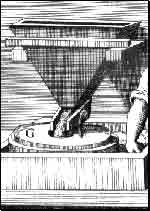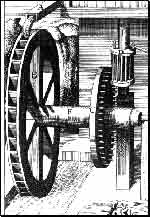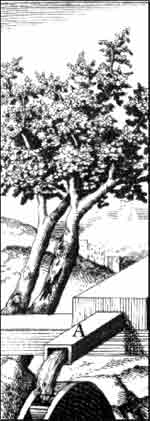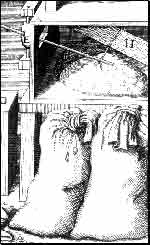Powder Flow II: Industrial Solids Handling & Mixing - Plant Design Principles & Operation
Nashville, TN •December 10-12 , 2014
By popular request, a new follow-on companion workshop treating industrial applications of the solids flow principles of Powder Flow I and solids mixing, which delves into the practical considerations of commonly encountered design & operational issues of powder systems. Topics include unassisted mass/funnel flow discharge; feeders both volumetric/gravimetric & their control; flow promoting devices both active/passive such as inserts, aeration & vibration; mechanical & pneumatic conveying of powders; solutions to processing segregating blends; and solids blending & mixing, mixer selection and mixture quality. This course is useful for anyone optimizing current or designing future solids mixing and handling systems, and includes practical design applications with attendee worked examples. It presumes a requisite knowledge of powder flow principles such as Powder Flow I, or equivalent experience. Typical participants include those from pharmaceutical processing, excipient and chemical manufacture, food and consumer product production, and a variety of advanced material processes.
Registration closes: November 17, 2014
Workshop navigation links below or to left:
Upcoming courses
Course venue
Instructor
What do others say?
Previous course participants
Course schedule
Fees, registration details, & contact information
What is powder flow?
Automated shear cell testing
Supporting characterization vendors
Consulting services
Contacts:
Registration, lodging & course content questions should be directed to: courses@powdernotes.com • Registration: 615.469.1342 • Fax: 240.524.8482
Additional details regarding conference center can be obtained at: www.evinsmill.com , Tel: 615.269.3740
Downloads:
Registration form: Registration form
Complete syllabus: E&G Powder School Syllabus
What is powder flow? PowderNote-PN1
In-house seminar (request quotation): Flow Seminar
Request an on-site equipment demonstration: Demo

Course venue
Powder Flow II is a new follow-on companion workshop to Powder Flow I. It treats in detail industrial applications of the solids flow principles learned in Powder Flow I and solids mixing, covering many of the practical considerations encountered in the design & operation of powder systems. It presumes a requisite knowledge of powder flow principles such as Powder Flow I, or equivalent experience. For those without first hand powder flow characterization experience, we would recommend attending both workshops.
Concepts are reinforced through attendee worked examples involving bin design to prevent arching/ratholing, mixture quality and design, mixer selection, flow insert placement, aeration requirements, feeder design, handling segregation, and conveying considerations.
For questions & registration materials, please contact:
E&G Associates, courses@powdernotes.com
Tel: (615) 591-7510 • Fax: (240) 524-8482

What do others say?
“I came away with a clear understanding of the practical aspects of bin and hopper design based on scientific principles. Who new there was a science to bulk solids handling? Although I do not consider myself an expert, the instructors provided the resources I need to address a particular flow problem and identify potential solutions to the problem.” - Procter & Gamble
“The information provided during this session is extremely valuable to me and my company. This topic not available at the university level; such that new engineers hired by my company have no knowledge of bin and feeder design.”- Solex Thermal Sciences
“What I liked most about this course is that practical applications were detailed and presented at a good pace. The instructors was very knowledgeable and obviously enjoys his work. I especially enjoyed the sessions on feeder design and flow aids.” - Roquette America

Previous course participants
Previous attendees to Mr. Marinelli’s workshops include: Alcoa, Alabama Power, Aventis Cropscience, BASF, Columbian Tectank, Cyclonaire, Duracell, Exxon Mobil, IAMS, Kraft Foods, Lafarge Cement, Merrick, Pfizer, Procter & Gamble, PPG, Purdue University, Roquette America, Schenck Accurate, Solex Thermal Sciences, Stanco, 3M, Tank Connection, WTW America, Zars Pharma.

Course topics & schedule:
-
Bin Design – Review of unassisted gravity flow bin design of mass flow and funnel flow hoppers.
-
Mixing and Blending – Overview of mixing quality and operation, and mixer selection.
-
Feeders – Volumetric and gravimetric, screws, belts, rotary valves, advantages and disadvantages, and key design principles.
-
Aeration effects – Impact on discharge rate, methods of correction.
-
Retrofits – Wedge hoppers, liners and coatings, other.
-
Segregation – Practical problems and solutions to typical segregation issues.
-
Flow aids – Passive and active, bin inserts, air blasters, vibrators, other.
-
Chutes – Do’ and don’ts, recommended chute angle due to material impact pressure.
-
Flow Report -- Typical flow report and design example based on report.
-
Design Examples—Practical design examples, calculating critical bin dimensions with attendee worked examples.
-
Modeling—Using models to understand flow issues and develop solutions, advantages and disadvantages.
-
Conveying—Overview of pneumatic and mechanical conveying principles.
top

Supporting characterization vendors:
(Previous presentations. Check back for final program.)
"The Sympatec Way of Laser Diffraction"
"The Sympatec Way of Image Analysis"
Helos™ laser diffraction demonstrations
Sympatec, Inc., Steve Morosky
www.sympatec.com • smorosky@sympatec.com
"Why measure engineering based material functions?
Perspectives drawn from powder technology practice"
iShear™ flow cell measurements
E&G Associates, Inc., Bryan Ennis, President
www.powdernotes.com • bryan.ennis@powdernotes.com
Solidsizer™ imaging demonstrations
J.M.Canty, Inc.
www.jmcanty.com • todc@jmcanty.com
top

![]()

Fees and registration details
Please note that registration is limited to 15 participants per course date. Course is also offered at regional locations on demand. Registation fee may be waived for outstanding students, with discretionary academic discounts for university staff. Direct requests to: scholarship@powdernotes.com.
Course fees: $1,950 + accommodations.
Registration form: Registration form
Complete syllabus: E&G Powder School Syllabus
Registration closes: Nov 17, 2014
Registration, lodging & course content questions should be directed to: courses@powdernotes.com • Registration: 615.469.1342 • Fax: 240.524.8482
Additional details regarding conference center can be obtained at: www.evinsmill.com , Tel: 615.269.3740

Instructors
Jim Davis is a Principal Consultant to E&G Associates, and President of Powder Processing Solutions LLC. As a previous solids handling technical leader with Procter & Gamble, he has 26 years of experience in the optimization, design & startup of powder processing/material handling systems, spanning over 20 countries and 4 continents. He offers many practical, unique insights for resolving difficult processing problems, and for minimizing design and development costs, from his experience in developing low cost systems for low income, third world markets. Jim holds a BSc in Mechanical Engineering degree from the University of Cincinnati, and a Professional Engineer’s license from the State of Ohio. He has served on the Executive Committee of the International Fine Particle Research Institute, as Chairman of the ASTM subcommittee on Powder and Bulk Systems, as Chairman of the Powder Handling subcommittee of the Particle Technology Forum of AIChE, and sits on the industrial advisory board for the trade journal Powder & Bulk Engineering. www.powderbulk.com.
Dr. Bryan J. Ennis is President of E&G Associates, Inc., and is a faculty member of Chemical Engineering of the University of Tennessee at Chattangooga. With three decades of experience in powder manufacturing, he has consulted for over 100 clients. He led agglomeration, solids handling & powder characterization programs of DuPont Engineering. He is the author of several invited contributions on particle processing, including the Agglomeration Advisor column of Powder & Bulk Engineering, Section Editor of Section 21: Solid-Solids Operations & Equipment of the Perry's Chemical Engineer's Handbook (8th Ed.).


What is powder flow?
Powder flow effects solids dosage operations through material handling problems, segregation, tablet uniformity, and fill control. But when we say a powder has poor flowability, what exactly are we really saying?
Consider packing sand in a cup to to make a tower for a sand castle. It is immediately obvious that powders ARE NOT fluids, as the tower does not collapse. Bulk powders are solids. Powders can withstand pressure and stress without flowing (or more correctly, yielding), in contrast with most liquids.
If you pack the sand tighter, your tower will be stronger. Powders have a yield strength – just as a solid – which is a function of the history of compaction stress, as well as the current applied stress. This is a powder’s flow function. Bulk powders DO NOT have a viscosity, except possible in a fluidized state. Simply forget most of the things you were taught about fluids, since they rarely apply to powders.
Lets’ think about measurements. You may have used torque rheometers to measure fluid viscosity. Could this work for a powder? There are some key requirements for rheometers: the fluid must not slip on the torque surfaces, the strain-rate field must be defined and the material functions of fluid must be known. Otherwise, you cannot determine a viscosity, and can only measure torque for an ill-defined stress field. This is useful for telling you the torque required to shear this fluid IN THIS VESSEL and FOR THIS GEOMETRY. It tells you nothing about shear forces or flow in an actual process. Furthermore, attempting to extend traditional rheometric testing to bulk solids simply doesn’t work – since bulk powders are generally not fluids.
Bulk powders are solids. They exhibit anisotropic stress, elastic deformation & yield strength. They DO NOT flow in the sense of a fluid. They fail along slip planes, often don’t exhibit shear gradients, can slip on wall surfaces, and are less sensitive to strain rate. Their flow properties are measured by shear cells, developed from geotechnical soil mechanics.
Downloads:
What exactly is powder flowability? PowderNote-PN1
In-house seminar (request quotation): Flow Seminar

Automated shear cell testing
Shear cells determine simple flow indices, which are measures of the forces required to initiate flow, defined as powder failure, based on measurements of cohesive strength, powder friction, and wall friction. This information is extremely useful for bin design, minimization of caking & segregation, and processes such as filling operations, roll pressing, tabletting, and encapsulation.
For more information see: iPowder Systems
Request an on-site equipment demonstration: Demo
Download information on the iShear split-cell rotary shear tester: iShear Rotary Shear Tester

Consulting services
E&G Associates has considerable consulting experience in support of granulation and compaction processes, as well as surrounding material handling issues, relying heavily on powder characterization of relevant formulation properties. Contact directly if such needs arise.
For more information see: E&G Associates
Email us for further inquiries: Email
